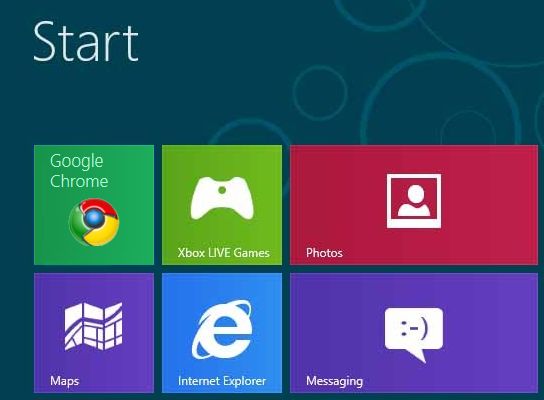Less than a week after Apple’s new iPad made its debut, complete with a high-resolution Retina Display, the blogosphere continues to buzz about screens and pixel density.
Not to be outdone by its competition, Microsoft has released some new details relating to screen resolution for Windows 8, which will most likely face down the iPad this fall for a share of the tablet market.
The resolution continues
In a posting on Microsoft’s official Building Windows 8 blog, senior programme manager David Washington wrote that the minimum resolution for Windows 8 will be 1,024 by 768 “in order to make it as simple as possible for developers to create great apps that work on all the different screens that are available now and in the future”. Furthermore, he added, only 1.2 percent of active Windows 7 users have screens with a lesser resolution.
 Windows 8 will require a resolution of 1,366 by 768 for features such as “snap”, which “pins” an application to a portion of the screen. That resolution was apparently chosen as “has enough horizontal pixels to fit the 320px width of a snapped app”. Allowing snap views of arbitrary size would “significantly increase the complexity of building an app”, in turn, requiring more effort on the part of the developer.
Windows 8 will require a resolution of 1,366 by 768 for features such as “snap”, which “pins” an application to a portion of the screen. That resolution was apparently chosen as “has enough horizontal pixels to fit the 320px width of a snapped app”. Allowing snap views of arbitrary size would “significantly increase the complexity of building an app”, in turn, requiring more effort on the part of the developer.
Meanwhile, there is no maximum resolution. “With higher resolutions, there is more space, so the layout is really never broken or truncated on higher-resolution screens,” he wrote. “You can run Metro-style apps on a screen as big as 30 inches with a resolution of 2,560 by 1,600.” By “Metro style”, he alludes to the design language that defines much of Windows 8 (including its new, tablet-friendly start screen), as well as a growing number of Microsoft products, such as Windows Phone and the revamped Xbox dashboard.
To make Windows 8 work more effectively on tablets, Microsoft retooled the traditional desktop-based interface. A Windows 8 machine now offers that aforementioned start screen comprised of colourful, touch-friendly tiles linked to applications; from there, another click or finger tap sends users to the “regular” desktop, complete with a few tweaks of its own.
Microsoft will release Windows 8 in October, according to a Bloomberg report that cited unnamed sources with “knowledge of the schedule” for the information. That report also suggested Windows 8 would simultaneously release on devices with Intel and ARM chipsets. While Intel’s products continue to handily dominate the traditional PC space, ARM processors run a significant percentage of mobile devices, such as tablets.
Windows XP and Windows 7, Microsoft’s two most successful versions of the operating system, both arrived on store shelves in October of their respective years. In addition, executives from a major hardware partner told eWEEK late in 2011 that Microsoft was aiming for an October 2012 release date. Then, it will face down Apple’s iPad in a battle over not only functionality, but also good looks.





